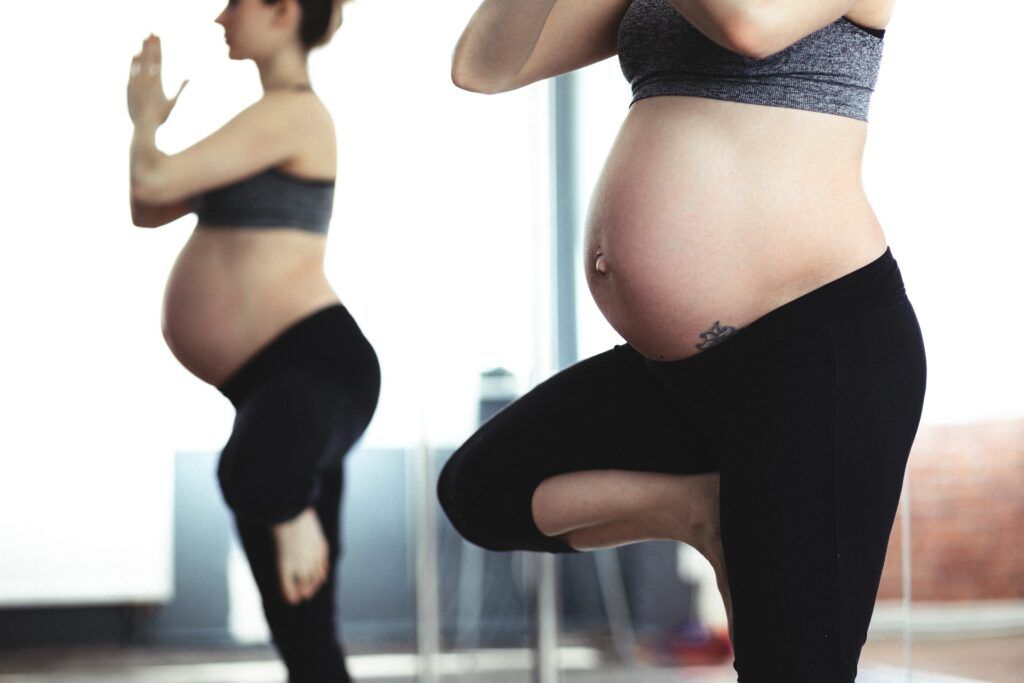Physical therapists are in a key position to address nutritional and physical activity needs, which powerfully impact all aspects of human health. Pregnancy and childbirth involve significant changes, frequently associated with a number of health concerns: pelvic and lumbar pain, urinary incontinence (UI), and colorectal dysfunction, are all specific and common issues affecting the wellbeing of women during the prenatal and postpartum periods. Poor nutrition and physical inactivity may weight heavily on these conditions. Paralleling a steep rise in obesity rates over the last 3 decades, severe maternal morbidity (SMM), which includes unexpected outcomes of labor and delivery that result in significant short- or long-term consequences to a woman’s health, has been steadily increasing and affecting more than 50,000 women in the United States in 2014 (1).
Globally, ~36% of pregnant women fail to attend the minimum recommended OB/GYN visits (2). Lower attendance rates are especially common for women with limited socio-economic resources and limited access to health care. For them, the WHO and existing research suggest that community-driven physical therapy and nutrition education programs can be very valuable to prevent and alleviate health issues related to pregnancy and childbirth (3, 4).
Listen to my podcast WOMEN’S HEALTH AND PELVIC PAIN WITH DR. AMY STEIN
Exercise, Nutrition, and Maternal & Pelvic Health: A Physical Therapist Role
A new study published in Physiotherapy Research International describes successful outcomes of a physiotherapist-led, nutrition and exercise community program that targeted women with low socio-economic resources in the US Midwest (5). The program focused on pelvic floor and core stability, healthy nutrition, and breastfeeding counseling.
Thirty-five women (18-44 years old) attending a Women, Infants, and Children (WIC) Program were recruited. At the beginning of the study, 37% of participants reported stress UI symptoms, 22.8% reported urge urinary UI symptoms, and 60% reported other complications, including pelvic or low back pain, abdominal pain, and pre‐eclampsia during pregnancy. Only 40% reported doing some form of regular aerobic exercise.
Training consisted of two‐90 min sessions, separated by 6 weeks, that included in-session and home exercise instruction regarding:
- Healthy nutritional intake
- Posture education
- A progressive pelvic floor and core strengthening exercise program
The education sessions were supervised by a licensed physical therapist with a doctoral degree in physiotherapy and public health training and a nutrition specialist, who was also a registered dietician with an advanced degree in nutrition and wellness.
Program’s outcomes were assessed at the beginning of the study (before training), and after its completion (on week 8), through the following surveys:
- Pelvic Floor Distress Inventory (PFDI-20): Measures overall pelvic floor distress and pain by means of 3 scales:
- POPDI‐6 (Pelvic Organ Prolapse Distress Inventory)
- CRADI‐8 (Colorectal-Anal Distress
Inventory) - UDI‐6 (Urogenital Distress Inventory)
- Pelvic Floor Impact Questionnaire (PFIQ-7): Measures life impact of pelvic floor disorders on women.
- Health‐related quality of life (HRQOL): This was assessed using the The Short Form (36) Health Survey (SF‐36), which measures HRQOL across eight different domains (General health, vitality, physical functioning, role physical, bodily pain, social functioning, role emotional, and mental health).
- Food Frequency Questionnaire (FFQ): Used to correlate usual diet and consumption patterns with health outcomes.
The study showed that positive changes in women’s health, reflected by decreased scores for the PFDI, CRADI, and UDI surveys, occurred after the intervention. Not surprisingly, and consistent with both the mechanical nature of pelvic organ prolapse and the short period of time evaluated, POPDI scores were unchanged.
Significant differences were seen between HRQOL in every domain except general health, bodily pain, and physical component score. The study further revealed significant post-training increases in healthy food choices, and higher report of breastfeeding frequency among participants.
Dr. Tatta’s simple and effective pain assessment tools. Quickly and easily assess pain so you can develop actionable solutions in less time.
Healthy Pregnancy with Physical Therapy
In line with new recommendations issued by the American College of Obstetricians and Gynecologists, the study authors point out that “traditional prenatal and postpartum programs focus on education of body changes and infant care and neglect to address the problems new mothers consider most important such as nutrition, pelvic floor dysfunction, low back and pelvic pain” (5)

The study results show that common health issues of pregnant women can be reduced through a focus on nutrition and exercise. Similar results were reported recently in the Indian Journal of Physiotherapy & Occupational Therapy, in a study that showed that a physiotherapist-delivered, 4‐week individualized pelvic floor program was effective in the treatment of postpartum urinary stress incontinence (6). Similarly, a 2010 article in Archives of Physical Medicine and Rehabilitation reported decreases in UDI symptoms after an 8‐session individualized physiotherapy program intervention (7).
According to the study’s first author, Lori Maria Walton, PhD, DPT, MS, MPH, “Community driven, maternal health programs with a focus on prescriptive exercise and nutrition for women during the antenatal and postnatal period are effective in improving maternal health outcomes, particularly those related to pain and dysfunction. They may also provide a cost-effective alternative to facilitate access for preventive antenatal and postnatal care for women with socio-economic challenges”.
Take your Physical Therapy practice to the next level with Functional Nutrition for Chronic Pain, a fully accredited CEU course!
REFERENCES:
1- Kilpatrick, S. K., Ecker, J. L., & American College of Obstetricians and Gynecologists. (2016). Severe maternal morbidity: screening and review. American journal of obstetrics and gynecology, 215(3), B17-B22.
2- World Health Organization (2016). WHO Recommendations on Antenatal Care for a Positive Pregnancy Experience. World Health Organisation.
3- Gadson, A., Akpovi, E., & Mehta, P. K. (2017, August). Exploring the social determinants of racial/ethnic disparities in prenatal care utilization and maternal outcome. In Seminars in perinatology (Vol. 41, No. 5, pp. 308-317). WB Saunders.
4- de Jongh, T. E., Gurol-Urganci, I., Allen, E., Zhu, N. J., & Atun, R. (2016). Integration of antenatal care services with health programmes in low- and middle-income countries: systematic review. Journal of global health, 6(1), 010403. doi:10.7189/jogh.06.010403
5- Walton, LM, Raigangar, V, Abraham, MS, et al. Effects of an 8‐week pelvic core stability and nutrition community programme on maternal health outcomes. Physiother Res Int. 2019;e1780. https://doi.org/10.1002/pri.1780
6- Jebakani, B., & Semeul, R. (2017). Effectiveness of Pelvic Floor Exercises for Stress Urinary Incontinence among the Postpartum Women. Website: www. ijpot. com, 11(3), 46.
7- Dumoulin, C., Bourbonnais, D., Morin, M., Gravel, D., & Lemieux, M. C. (2010). Predictors of success for physiotherapy treatment in women with persistent postpartum stress urinary incontinence. Archives of physical medicine and rehabilitation, 91(7), 1059-1063.



